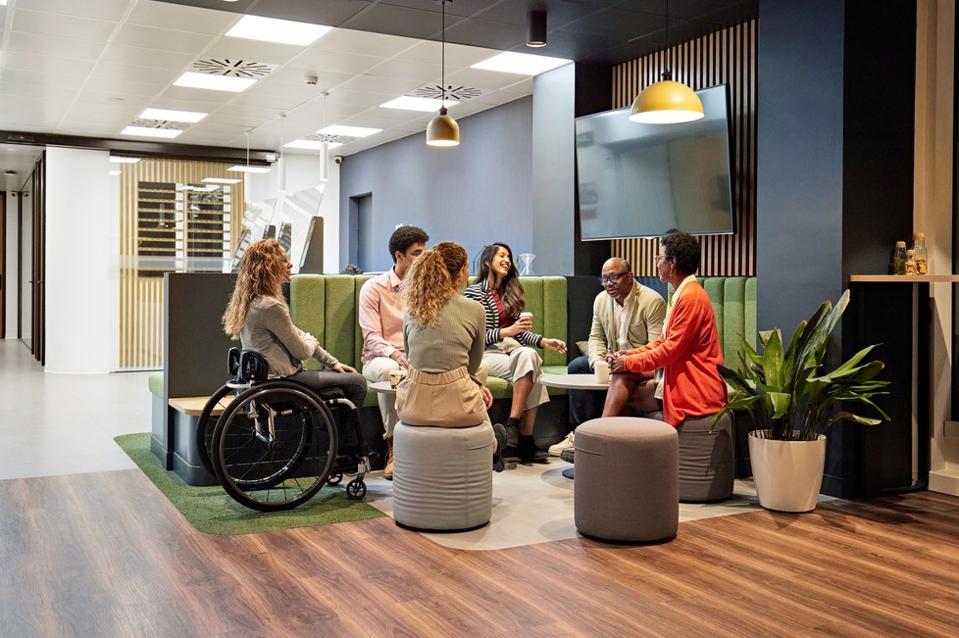It’s 10 a.m. on a Thursday. Instead of back-to-back meetings and project updates, a team huddles over laptops in a buzzing workspace. Code is flying. AI tools are generating UI prototypes in real time. There’s an energy that feels less like a corporate grind and more like a creative sprint. By 2 p.m., teams test a working prototype of an idea that didn’t exist that morning but could lead to the next big innovation.
Welcome to the age of vibathons, also known as vibe coding: high-speed, AI-powered innovation sprints designed for the next generation of problem-solving. Organizations such as Microsoft host these coding jam events where energy meets innovation.
A vibathon is a shorter, more intense version of a hackathon that prioritizes speed, creativity and the use of AI tools to accelerate innovation. Unlike traditional hackathons that may stretch over 48 hours, vibathons often run for four to six hours. It reduces the risk of burnout.
The goal isn’t to ship a perfect product. It’s to build something tangible and unleash creative momentum.
Where hackathons reward brute-force effort and deep technical stacks, vibathons focus on velocity, product thinking andcross-functional collaboration. It’s less about raw code and more about rapid prototyping and inspired decision-making.
Speed Is The New Strategy
In an era where the biggest bottleneck isn’t technology but time, speed is a competitive advantage. Vibathons compress the innovation cycle, utilizing AI tools such as code generators, design assistants and smart workflows to transform rough ideas into usable prototypes within hours.
Vibeathons aren’t about aiming for flawless execution. Teams rapidly bring ideas to life through immediate, hands-on experimentation. They uncover what works by quickly exposing what doesn’t, turning fast failures into valuable feedback loops.
Why AI Is At The Center
Participants are encouraged to use generative AI to streamline development. Writing code, generating wireframes, crafting product copy, even simulating user feedback focuses less on busywork and more on solving the actual problem; making the process more efficient positions the company as a leader in its particular market.
Here’s how to run a high-impact vibathon:
Set a Bold, Clear Prompt
Frame the sprint around a specific question or challenge. For example, you could ask:
- “What’s a manual process we could automate in the next hour?”
- “If we had to launch a new feature by tonight, what would it be and how would we do it?”
- “How could we use AI to solve a customer problem we’ve been ignoring?”
- “How might we use existing internal data to deliver new customer value?”
- “What would a radically simpler version of our service look like?”
- “How could we reduce customer support tickets by half—using AI tools?”
Invite A Diverse Mix
This shift opens the door to designers, product thinkers, marketers and team members without any coding experience to contribute meaningfully using AI tools as force multipliers.
Prioritize Momentum, Not Polish
Use a timer. Limit each build phase to 60–90 minutes. Encourage quick, scrappy progress. Remind teams: this is about proof of concept, not production code.
Integrate AI Into Every Step
Provide access to a variety of AI tools such as coding assistants that generate code snippets, design generators that create UI mockups and no-code tools that automate repetitive tasks. Offer quick tutorials to level the playing field early, ensuring that everyone makes the most of these powerful tools.
Share Prototypes—Then Debrief Fast
This step is crucial in fostering a collaborative environment. End with brief, high-impact demos. Focus the debrief on what teams learned, not just what they built. The real outcome is insight.
Capture Learnings, Not Tasks
Avoid turning this into a meeting recap. Instead, document big takeaways and new ideas sparked by the sprint. Let the momentum carry into the next work cycle.
Real industry disruptors are those who rapidly experiment and learn. Vibathons create a container for that kind of thinking. They push teams to transition from planning mode to building mode without waiting for approval from above.
They’re not just fast. They’re focused, energizing and deeply instructive. Because in the age of AI, the next big thing isn’t built by committee. It’s prototyped in an afternoon.

